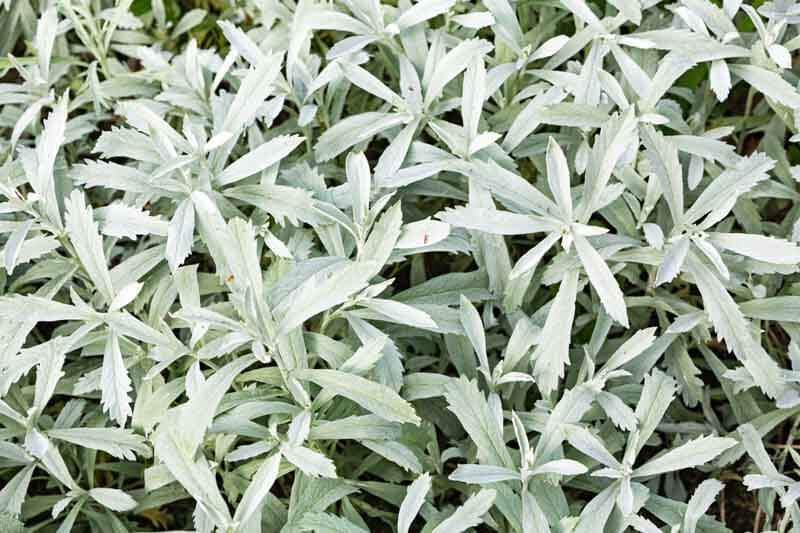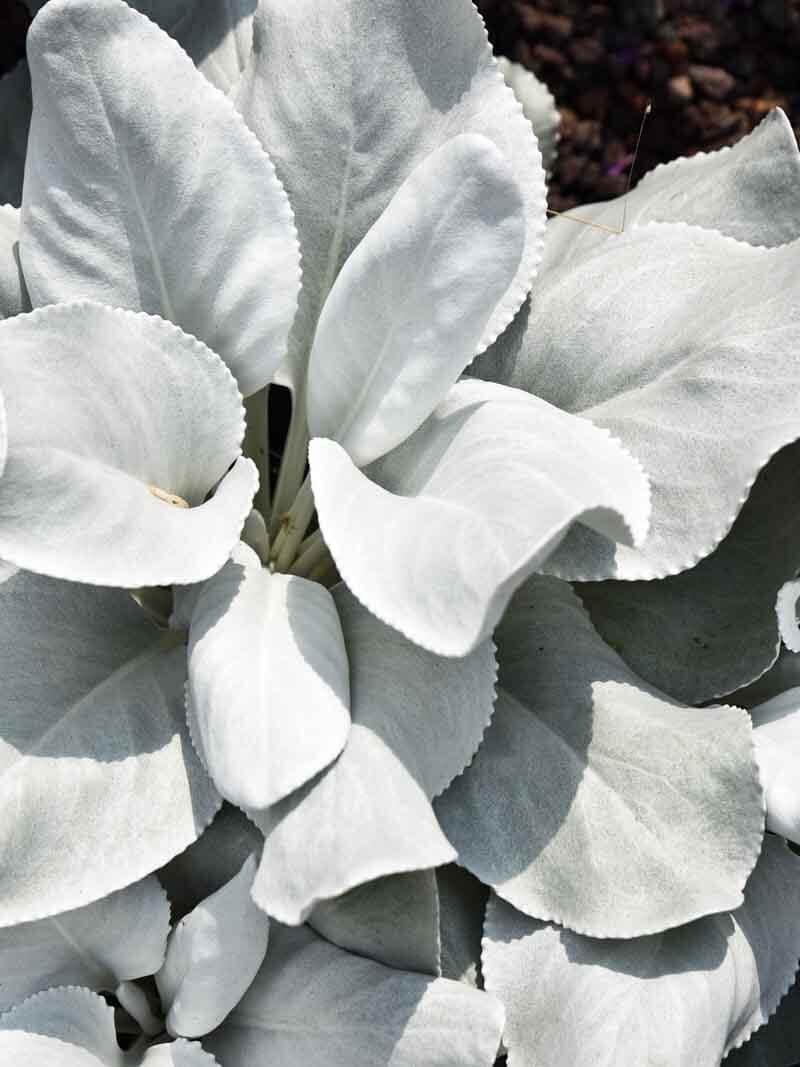
Raising a pubescent teen can feel like being pecked to death by a duck. But it’s a lot more pleasant when it comes to plants. Here pubescence is “a covering of soft down or hairs on certain plants and insects.” It serves as a protective adaptation of some plants originating in regions with a long, dry season and can add a grey or silver appearance to leaf surfaces.
What is Leaf Pubescence?

A leaf contains thousands of tiny pores, called stomata, through which a plant respires. These openings are vulnerable portals for moisture loss. Plants have developed various strategies for reducing water loss, and one of them is pubescence.
A pubescent leaf will feel soft or fuzzy to the touch. This texture is produced by microscopic hairs (trichomes) that can form a protective layer to help plants stand up to brutally dry conditions. The hairs can come in a variety of lengths and textures: Tomentose (dense, soft, white wool), hirsute (rough, stiff hairs), or villous (long, shaggy hairs) to name just a few.
If you’ve ever experienced the hot winds of the desert, you know how quickly it can draw moisture out of your skin. It does the same to plants. Moisture loss increases with wind speed and sun exposure. Pubescent hairs help deflect air from the leaf surface. Even a minor slowing of air can have a significant effect on reducing moisture loss through stomata. Dense pubescence also helps to shade the leaf surface. Each tiny hair casts a microscopic shadow to protect the leaf’s outer layer from direct solar exposure.
Grey and Silver Garden Plants

Not all pubescent plants are drought tolerant, so it’s important to know the more moisture-tolerant types, such as silver spurflower (Plectranthus argentatus, USDA Hardiness Zones 10-11) and licorice plant (Helichrysum ‘Silver Mist’, Zones 7-11), which thrive in any climate, provided it’s not too drenched in the summer rain. These are plants from areas with high-intensity sunlight where temperatures remain moderate, such as the South African coastline.
Here are some reliable perennial choices for drier climates and how to use them.
White sagebrush (Artemisia ludoviciana, Zones 4-9) is a fast-spreading perennial with 1-3 foot stems of fragrant, silver leaves that are suited to herb gardens or spacious sunny borders. It is native across North America and Mexico and is more heat and drought-resistant than some silvery garden artemisias originating from Europe, such as the fine-leaved, bushy Powis Castle silver sage (Artemisia ‘Powis Castle’, Zones 6-9), which will grow in practically any garden with full sun and good soil drainage.

Tender felt bush (Kalanchoe beharensis, Zones 11-12) is a pubescent succulent from Madagascar with foot-long leaves cloaked in fuzzy gray. In California, plant it in the sun on the coast and shaded inland locations. The tropical succulent makes an excellent summer patio specimen and house plant, too. For best-potted performance plant it in Black Gold Cactus Mix.
The popular lamb’s ear (Stachys byzantina, Zones 4-8) originates in the arid Mediterranean and is a low, spreading groundcover ideal for planting along the edges of paths and between rocks and flagstones in most well-drained gardens. A visually comparable, non-spreading mint with wooly white leaves is silver sage (Salvia argentea, Zones 5-8), which is at home in any rock garden or sunny, well-drained bed.

Another from the Mediterranean is lavender cotton (Santolina chamaecyparissus, Zones 6-9). It forms a rounded, silver ball of highly aromatic foliage that makes a beautiful spot of silver that develops buttons of yellow flowers in summer. Use it in knot gardens due to its tolerance to shearing.
One of the brightest of the silver-grey set is shining white senecio (Senecio candicans ‘Angel Wings’, Zones 8-11) with its glowing, lightly felty leaves. Plant it in containers or sunny borders.
Designing with Grey and Silver Garden Plants

Pubescent plants are valuable tools in garden design. First off, they can truly glow under moonlight because the hairs become iridescent. They pop on a cloudy day with reds and other muted colors. Due to interest being in the foliage, they do not visually come and go but retain their fuzzy beauty all season long or nearly year-round in mild climates.
It’s great fun to experiment with contrasts. Play a glossy leaf off a pubescent one in your potting scheme. Play fine-textured needles against large fuzzy leaves. Textural differences make both plants stand out better.

The neutrality of gray or silver shades means you can use them with more vivid colors for really striking compositions. Deep burgundy foliage, such as that of purple aeonium (Aeonium arboreum ‘Zwartkopf’, Zones 9-11), bronze New Zealand flax (Phormium tenax, Zones 8-11), or purple fountain grass (Pennisetum setaceum ‘Rubrum’, Zones 9-10) looks outstanding against grey and silver leaves. Burgundy plants create vitality in otherwise subtle, cool-colored gardens in dry climates and have a light value that does not compete with gentle-colored flowers in blues, lavenders, pale pinks, and whites.
With so many silvers and greys out there to choose from, it’s possible to create the coolest perennial gardens within the arid landscape. If you’ve longed for a really elegant tool for eye-catching plantings in your droughty garden, then turn to pubescence to reflect the light. And, if you’re lucky, that other pubescent individual in your life may take notice and put down the Smartphone for a nanosecond to admire the garden fuzz.


